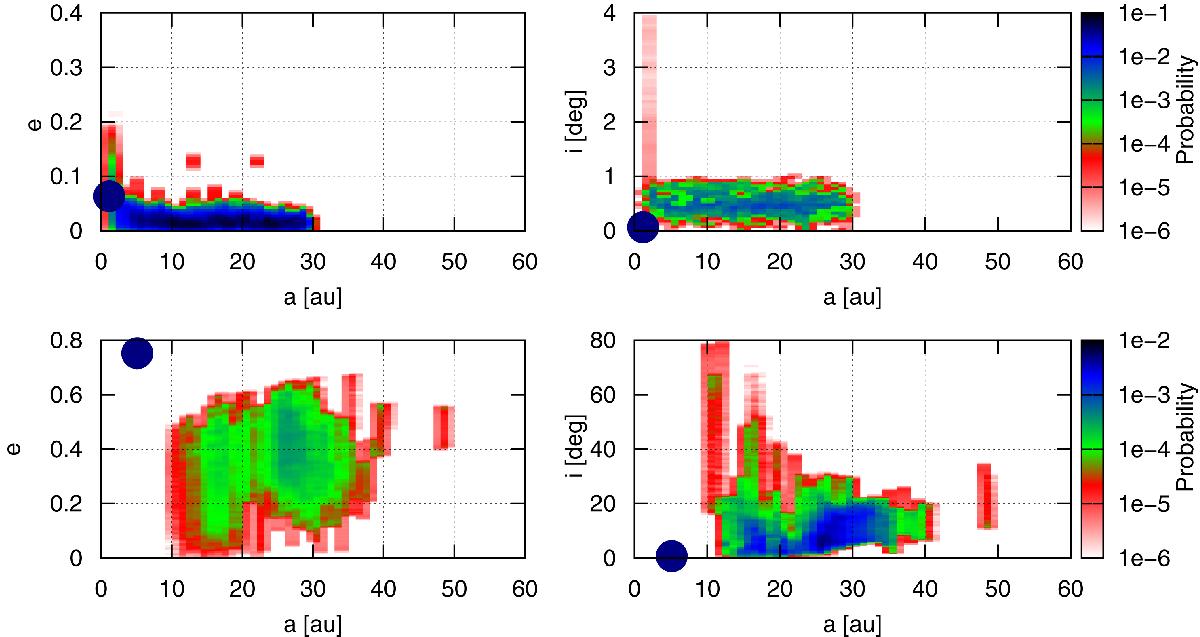Fig. 5

Occupation e vs. a and i vs. a of systems composed of Type-P particles. The color zones of these maps are regions with different degrees of probability where the particles can be found. The blue filled circle represents the planet surviving in each system. Top panels: reservoir of small bodies with low eccentricities (e< 0.05) and low inclinations (i< 1°). The surviving Jupiter-mass planet has values of semimajor axis and eccentricity of 1.16 au and 0.06, respectively. Bottom panels: population of small bodies, which reach eccentricities e< 0.6 and inclinations i< 80°. The surviving Jupiter-mass planet shows a semimajor axis a = 5.1 au and an eccentricity e = 0.75.
Current usage metrics show cumulative count of Article Views (full-text article views including HTML views, PDF and ePub downloads, according to the available data) and Abstracts Views on Vision4Press platform.
Data correspond to usage on the plateform after 2015. The current usage metrics is available 48-96 hours after online publication and is updated daily on week days.
Initial download of the metrics may take a while.


